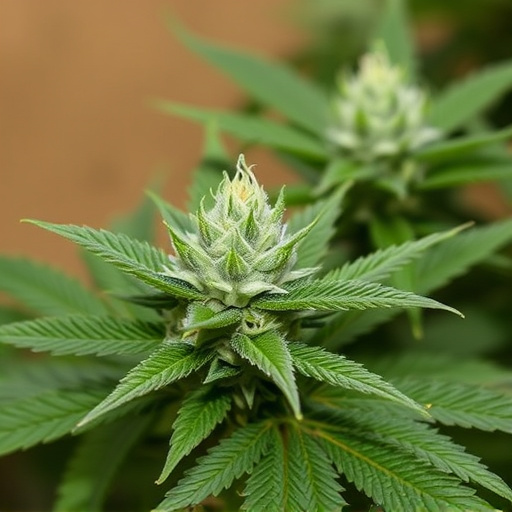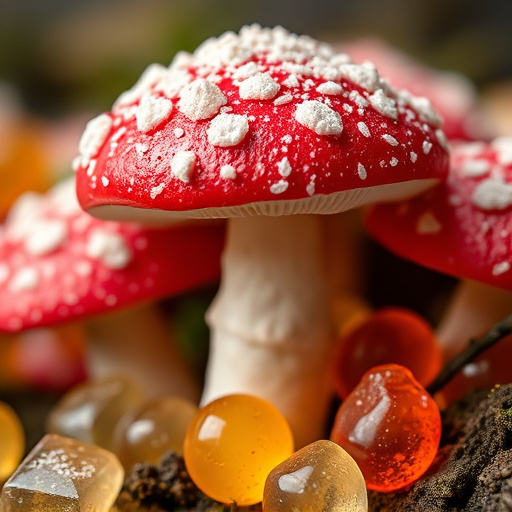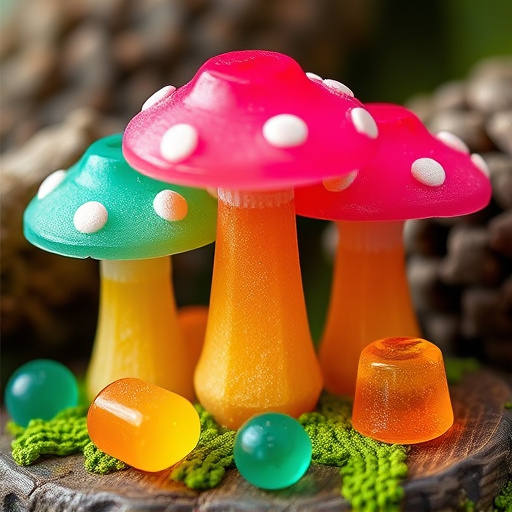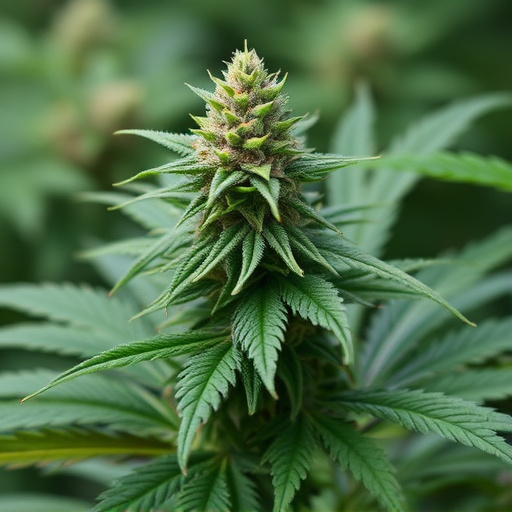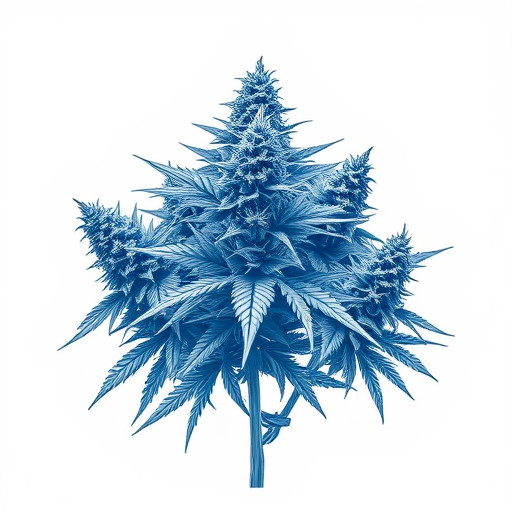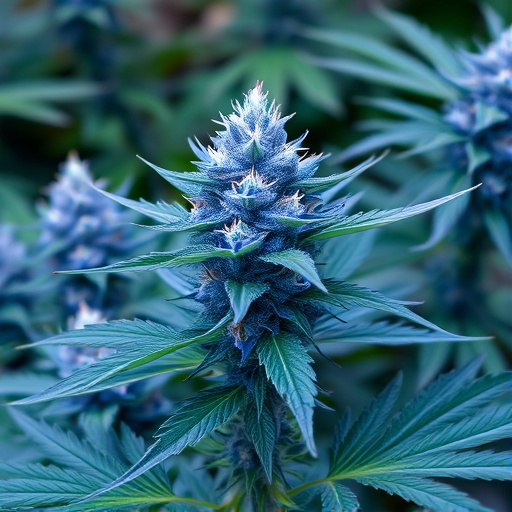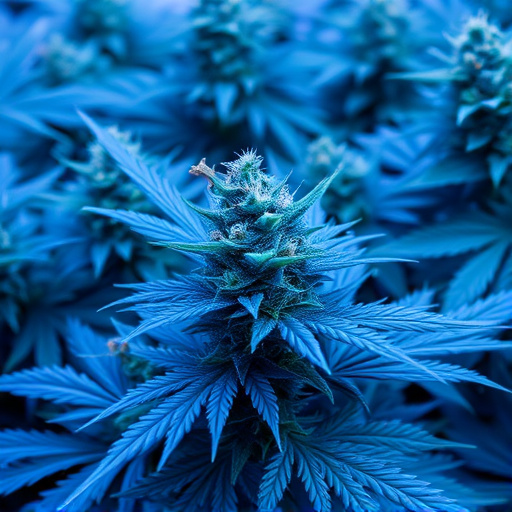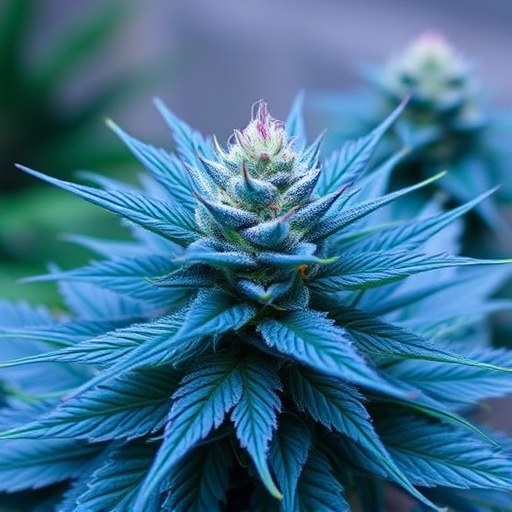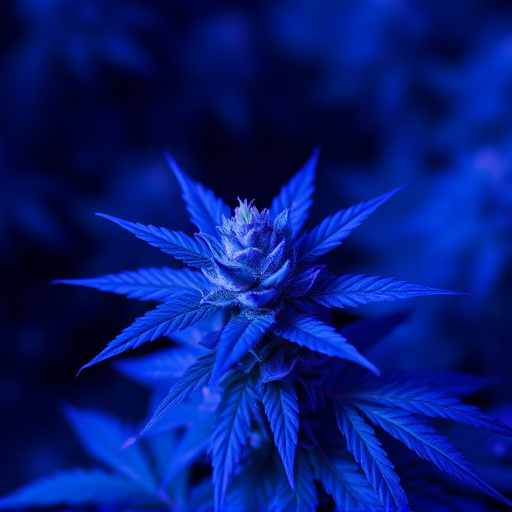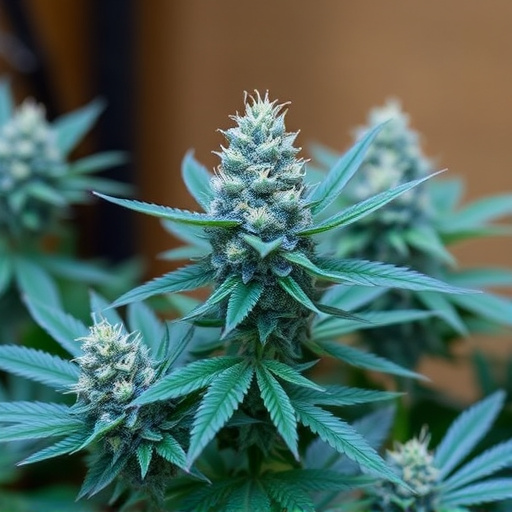Blue marijuana strains' unique attributes result from specific terpene profiles, including myrcene, limonene, and linalool, which contribute to distinct flavors, aromas, and potential therapeutic benefits. These terpenes interact with cannabinoids like THC and CBD, creating a synergistic effect that offers tailored effects for various wellness goals, such as relaxation, mood elevation, and insomnia relief. Understanding terpene composition enables users to choose blue cannabis strains aligned with their preferences and health needs.
“Uncover the enigmatic world of terpenes, the aromatic compounds responsible for the unique characteristics of cannabis flowers. This article delves into the science behind terpenes, shedding light on their diverse roles in the cannabis experience. From the distinct aroma and flavor of blue marijuana strains to their potential medicinal benefits, understanding terpenes is key to navigating this complex plant. Explore how these compounds contribute to the therapeutic effects and enjoy a deeper appreciation for the intricate tapestry of cannabis.”
- Understanding Terpenes: The Aromatic Compounds in Cannabis
- Blue Marijuana Strains and Their Distinctive Terpene Profile
- The Role of Terpenes in Cannabis Flower's Effects and Medicinal Benefits
Understanding Terpenes: The Aromatic Compounds in Cannabis
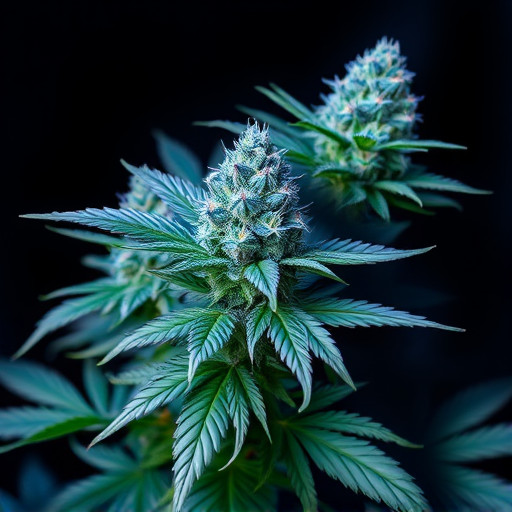
Terpenes, often described as the aromatic compounds of cannabis, play a pivotal role in shaping the unique characteristics and properties of different blue marijuana strains. These volatile organic compounds contribute significantly to the distinct flavors and aromas that make each strain appealing. Beyond their olfactory appeal, terpenes have been linked to potential therapeutic benefits, interacting with cannabinoids like THC and CBD to create complex effects on the body and mind.
In cannabis, various terpene profiles exist, each offering its own sensory experience and purported health advantages. Blue marijuana strains, known for their calming and relaxing properties, often boast terpene compositions that include myrcene, limonene, and linalool. Myrcene is renowned for its earthy, musky notes, while limonene provides a bright, citrusy aroma. Linalool, with its lavender-like scent, adds to the overall soothing ambiance of these strains. Understanding these terpenes and their interplay is key to appreciating the nuanced effects that different blue marijuana varieties can offer.
Blue Marijuana Strains and Their Distinctive Terpene Profile
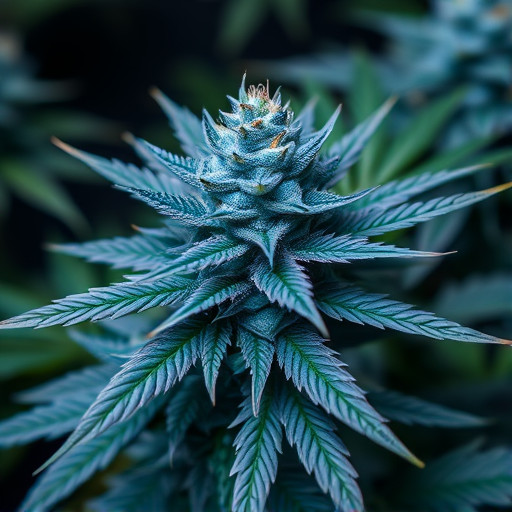
Blue marijuana strains are renowned for their unique and sought-after properties, largely attributed to their distinctive terpene profile. These compounds, secreted by the cannabis plant, contribute significantly to the aroma, flavor, and potential therapeutic effects of each strain. In the case of blue strains, they often feature elevated levels of myrcene, a terpene known for its earthy, piney scent and sedative qualities. Myrcene is believed to enhance the relaxing and sleep-inducing effects of cannabis, making blue strains popular choices for those seeking relief from insomnia or stress.
Beyond myrcene, blue marijuana strains may also contain high concentrations of limonene, a terpene with a bright, citrusy note. Limonene is linked to mood elevation and appetite stimulation, adding to the potential therapeutic benefits of these strains. The combination of myrcene and limonene creates a well-rounded sensory experience, characterized by a balance of relaxation and uplifted spirits—a signature of many blue cannabis varieties.
The Role of Terpenes in Cannabis Flower's Effects and Medicinal Benefits
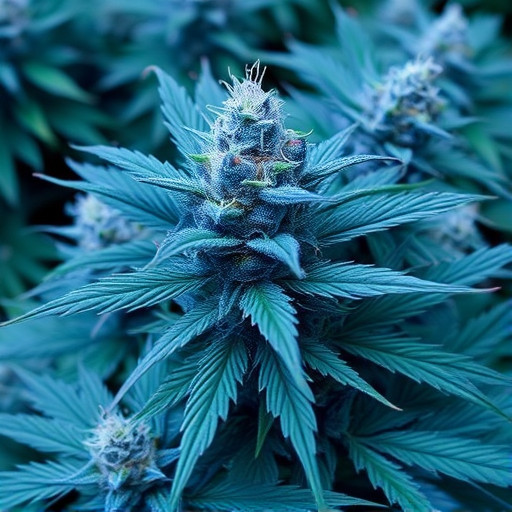
Terpenes, often referred to as the “aroma compounds” in cannabis, play a pivotal role in shaping the unique effects and medicinal properties of blue marijuana strains. These volatile organic compounds are responsible for the distinct scents and flavors associated with different cannabis varieties. More than just contributing to the pleasant olfactory experience, terpenes interact synergistically with cannabinoids like THC and CBD. This complex interaction is what gives each blue marijuana strain its characteristic therapeutic profile.
For instance, myrcene, a common terpene in many blue strains, is known for its calming effects, potentially helping with insomnia and anxiety. Limonene, another prominent terpene, offers uplifting and mood-enhancing properties, making it useful for treating depression and stress. In the realm of medicinal cannabis, understanding the terpene makeup of specific strains can help patients tailor their treatment to specific needs, enhancing both efficacy and overall well-being.
Terpenes, the aromatic compounds found in cannabis flowers, play a significant role in not only shaping the unique scent and flavor of different strains but also contribute to their medicinal benefits. Blue marijuana strains, known for their distinct terpene profiles, offer a range of effects that cater to various user needs. Understanding these compounds is essential when navigating the diverse world of cannabis, allowing consumers to make informed choices based on desired outcomes.
